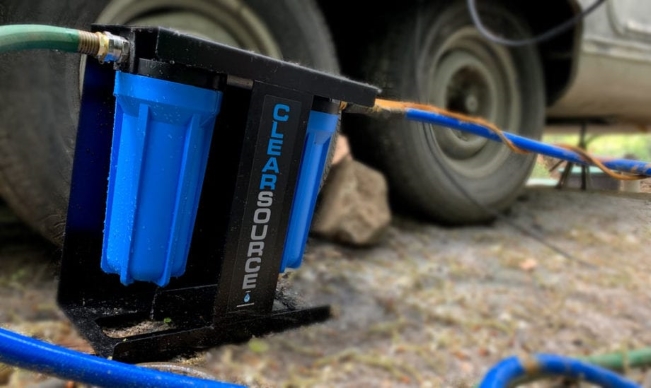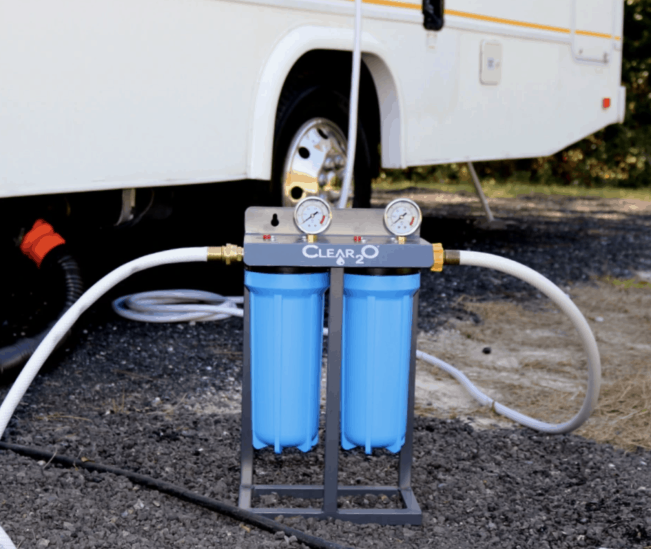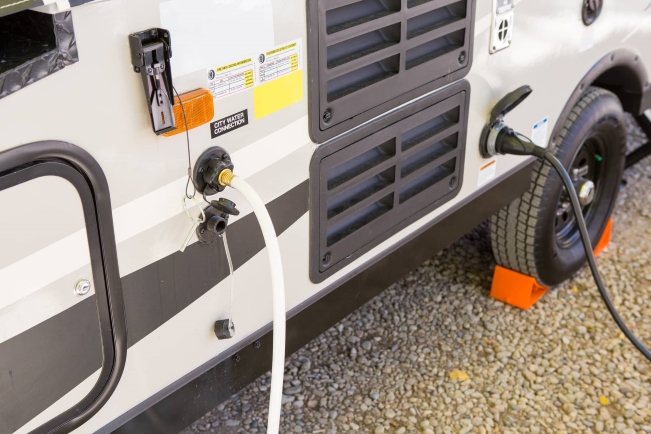Heading off for a few days off-grid with family or friends in a campervan or caravan? You’ll need some basics, but what more than ample amounts of clean, drinkable water for the length of your stay. Caravans, motorhomes and campervans store water in water tanks, and these are divided into freshwater tanks for clean drinking water, showers and sinks, grey water tanks that collect dirty water from mentioned sinks and showers, and black water tanks that do the same for toilets.
The system also includes a network of hoses for supply and drainage, water pumps that get the water to where it should be, a caravan water filter to get rid of impurities from stored or mains water, and gauges that let you monitor the amount of water you have left. So, quite an intricate system that lets you enjoy some of the basic necessities of home, far from home.

Caravan Water Tanks
Getting the right water tank depends on several factors – how much water it needs to provide, for how many people and for how long. In addition, the space you have available to fit one, whether in a caravan or a bigger motor home, can narrow down possible choices. Where you will be spending most of your time also means choosing a tank that’s made in the right materials.
Tank Capacity
Caravan water tank capacities vary. Tanks in smaller capacities (22 litres) will provide enough water for two people throughout the weekend. Double the capacity to 50 litres and you’ll have fresh drinking water for a family of four. Extremely large tanks (over 200 litres) will naturally be suited to bigger vehicles, and provide water for the duration of longer road trips without the need of filling up. Of course, here you need to think about space as you need to fit three different tanks, all of which need to be securely bolted down. Camping for longer periods will mean a bigger tank. But if you frequent camper parks, then a smaller tank is more than adequate as you can always refill from the mains supply.
Materials
Here there is the choice between polyethylene plastic. galvanised steel and nylon or PVC tanks. Poly tanks are light, flexible and also 100% food-graded so a good choice for even smaller camper vehicles. Galvanised steel tanks are heavier though more durable, and much easier to repair if punctured. They’re good when camping near rivers or beaches as they’re also corrosion-resistant. The cheapest choice is PVC tanks. These are soft-side bladder tanks that lack the durability of other materials, though come as a portable and backup solution when you need more water.

Installation and Tank Maintenance
Where you plan to place individual tanks will depend on their size, how many freshwater tanks you have, as well as the available space in the vehicle. Most tanks will be of the permanent type, so placement is key. Freshwater tanks are usually placed inside and near taps and showers, but need either a submersible or pressure water pump to feed water through cold and hot water hoses in distinct colours. Filters are fitted just before the taps. Grey and black water tanks empty the water from toilets, sinks and showers using corrugated tubing. And larger variants of these can be placed under the vehicle. This also allows easy emptying at designated dump points when full.
Freshwater tanks must always be filled with food-grade (not garden) hoses to avoid water having a distinct taste and plasticky smell. Regular cleaning also means there won’t be a buildup of bacteria, algae and toxic materials if there’s damage anywhere along the system. Blackwater tanks need a good dose of chemicals before every new trip.
Freshwater Filters
Once you have your tanks sorted, drinking water needs to be filtered before use. Water filters remove any bacteria, weird tastes and smells, dirt and other impurities. Though mains water is generally of good quality in Australia, the same may not be true as to what comes out of caravan taps. A caravan water filter is inexpensive, small and easy to install, and the health benefits are a bonus. There are different types sold, with different filtering methods.
Filtration Processes
Carbon and activated carbon water filters are the cheapest and most common types of water filters. They work by capturing larger particles of dirt, rust and organic compounds in carbon blocks, so the remaining drinking water is free of foul-smelling tastes. They won’t, however, remove bacteria and here you need to spend a little more for a reverse osmosis filter. This is also more effective in removing any other contaminants.

A reverse osmosis filter first removes any sediment and chemicals in a pre-filter, before water is forced through a permeable membrane that captures larger solid particles. The remaining water is then filtered through a post filter before reaching the tap.
Filter Types
Depending on how and where they’re installed, water filters used in caravans and motorhomes can be of two types – inline and fixed. Inline filters are simple and affordable and can be installed between the mains water supply in the camper park and your vehicle, or between the tank and tap. They allow water to be filtered before entering the tank, as well as before coming out of the tap. Fixed filters are part of the piping in bigger camping vehicles, often fitted under the sink. They filter the water that comes out of the tank.
Tanks and filters form part of a system that delivers fresh drinking water when camping. You may also want to monitor water usage with sender probes and gauges, use non-toxic hoses with inlet and outlet valves in tanks, and supply water at the right pressure with a suitable manual or electrically-powered pump.
























